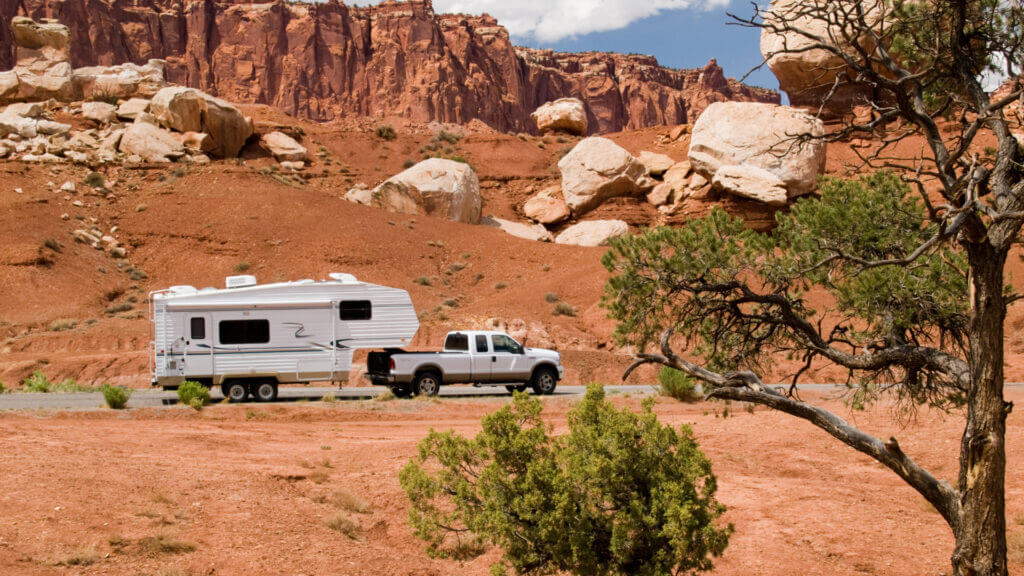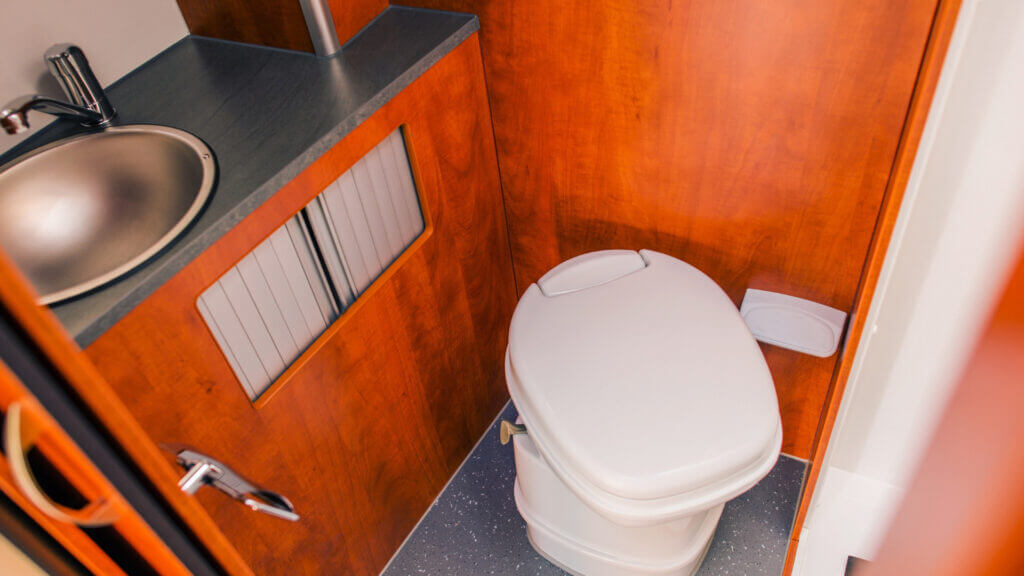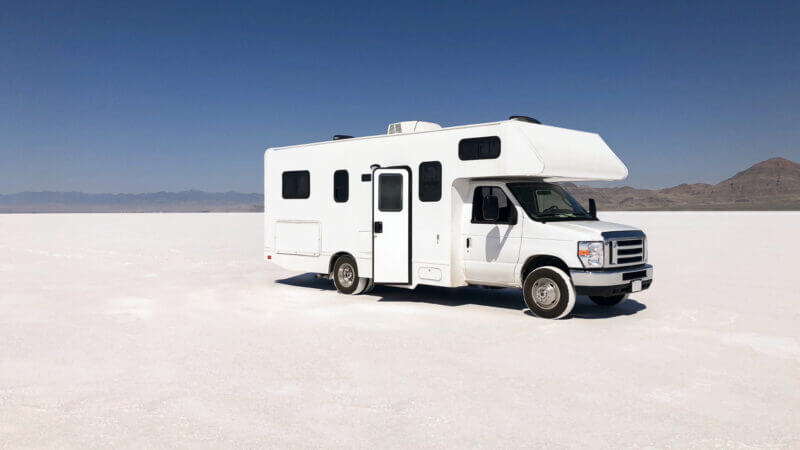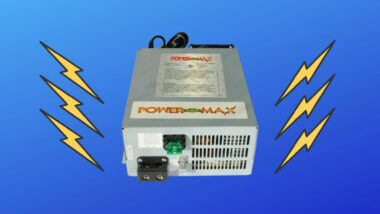Table of Contents Show
If you want to experience the best of boondocking, you need a self-contained RV. But what is that, and how does it differ from any other RV? Let’s dive into the details so you can decide if you need a self-contained RV or not.
What Does ‘Self-Contained RV’ Mean?
The concept of a self-contained RV is quite simple. It means your RV has a bathroom and tank system for holding water. You don’t need any outside sources to operate. A self-contained RV is fabulous to have when boondocking because you won’t have to worry about finding a bathroom or worse! Having a self-contained RV makes your camping experience much more enjoyable.
Are All RVs Self-Contained?
It might seem like all RVs would be self-contained, but that’s not the case. Larger rigs typically are, while smaller travel trailers often don’t have a bathroom on board. Some campervans or DIY campervans may also lack a toilet and holding tanks.

Pro Tip: Need to take the lesson back a step? Read What Is Considered A Recreational Vehicle?
What Does It Mean When an RV Is Not Self-Contained?
So, what is a non-self-contained RV? Simple. Remove the toilet and holding tanks, and it’s not self-contained.
If your RV isn’t self-contained, you’ll usually camp at sites with bathroom facilities. It’s similar to tent camping but with a sturdier roof overhead. If you’re not interested in boondocking, a non-self-contained RV will be just fine for you.
Benefits of a Self-Contained RV
What is a self-contained RV’s most prominent benefit? Convenience! You can go whenever you want, wherever you are! Even when staying at a campground, it’s nice to have your own bathroom. No more worrying about how clean things are, the smell, and sharing facilities with strangers. Your RV’s toilet might also come in handy on long road trips.
Another benefit to a self-contained RV is the ease of living off-grid. It’s so freeing to go for an extended period without hookups. And you’ll have so many more campsite options because you aren’t dependent on amenities!
It’s also a tremendous benefit to have one in the COVID-19 climate. Many RV parks have closed their restrooms for safety reasons. So, the only way you can camp is if you have a self-contained RV.

DIY Upgrades and Tips To Enhance Self-Contained Ability
What is a self-contained RV’s biggest downfall? Limitations. Your black water tanks reach capacity, or your generator runs out of fuel–you get the idea. Luckily, some DIY upgrades will take your off-grid camping experience to a whole new level.
Composting Toilet
A straightforward way to improve your self-contained ability is to add a composting toilet. This modification will reduce or eliminate the occasional sewage smell we all hate! A composting toilet doesn’t use a black tank, so you don’t have to empty it as often.
A composting toilet also lets you convert your black water tank into an additional gray water tank. This means more holding space for grey water, which means longer camping trips!
You’ll also save fresh water by upgrading to a composting toilet and no more using water to flush. Which, again, means you can stay off-grid for longer.
Solar Power
Another way to upgrade your RV is to install solar power. Chances are your RV came with a generator. Generators are adequate, but they have downsides. They’re noisy, and they don’t last as long as solar.
Installing a solar power setup means you’ll have power as long as you have sun, and you can store power in your batteries. So, even if you run into a few cloudy days, your rig will still have energy.
Learn to Conserve Fresh Water
What is a self-contained RV’s freshwater system like? The tank size will vary depending on the size of your RV. But no matter your freshwater tank’s size, you should still conserve water. It’s easy to blow through all your fresh water if you aren’t careful. And that’s the last thing you want when you’re in the boonies!
Conserving fresh water will let you extend your off-grid camping experience. You could shower less often (or shower at a gym or truck stop) and decrease water flow when doing your dishes. You could even use compostable disposable plates to save even more water.
Where to Dump a Self Contained RV
Eventually, all self-contained RVs need a little outside help. When your tanks are full, it’s time to find a place to dump them. You have a few options for doing so.
You could stay at an RV park or campground for a night and take advantage of full hookups. If you don’t want to pay for a night of camping, you can often use the dump station for a small fee. You could also find dump stations at gas stations or rest stops.
One of the best ways to find dump stations nearby is to use an app. There are plenty of choices out there, but we especially like Sanidumps. You can find approved dump stations quickly so you can get back out there.
Let’s sum up. What is a self-contained RV? It’s a rig with a bathroom! And why are they awesome? Because you can go anywhere without relying on outside facilities.
Not all RVs are self-contained, but if you want to get into boondocking, they’re truly a must-have for the best experience!






